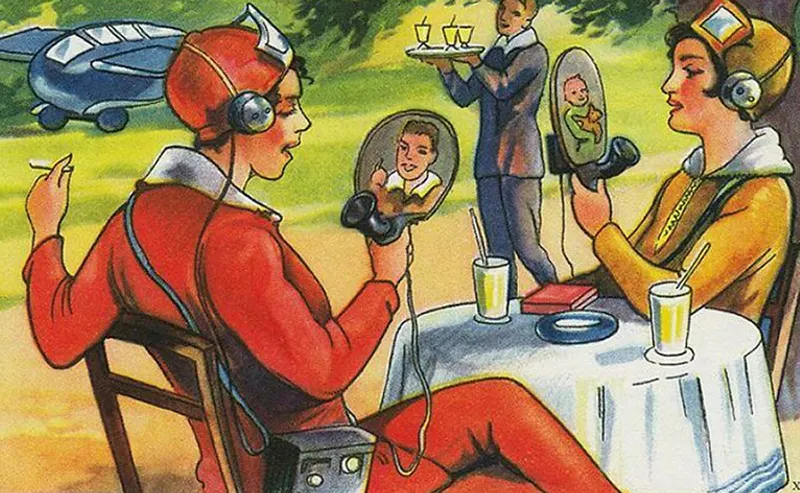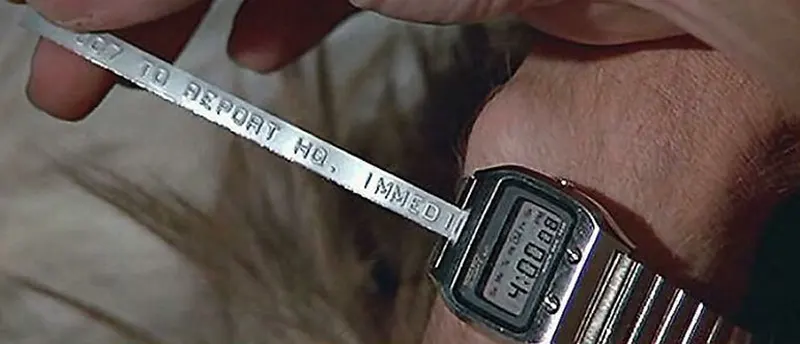 Humanity has always tried to predict what the future would look like and this vintage photo collection shows predictions that were either a hit or a miss.
Humanity has always tried to predict what the future would look like and this vintage photo collection shows predictions that were either a hit or a miss.
While some people actually managed to predict it rather accurately, many of them look pretty hilarious from today’s perspective.
The term “retrofuturism” was first coined in a 1960s book titled Retro-Futurism by T.R. Hinchliffe. In its more popular form, futurism (sometimes referred to as futurology) is “an early optimism that focused on the past and was rooted in the nineteenth century, an early-twentieth-century ‘golden age’ that continued long into the 1960s’ Space Age”.

An artist’s depiction of the future, painted in 1930.
Retrofuturism is first and foremost based on modern but changing notions of “the future”. As Guffey notes, retrofuturism is “a recent neologism”, but it “builds on futurists’ fevered visions of space colonies with flying cars, robotic servants, and interstellar travel on display there; where futurists took their promise for granted, retro-futurism emerged as a more skeptical reaction to these dreams”.
It took its current shape in the 1970s, a time when technology was rapidly changing. From the advent of the personal computer to the birth of the first test tube baby, this period was characterized by intense and rapid technological change.
But many in the general public began to question whether applied science would achieve its earlier promise—that life would inevitably improve through technological progress.

A navigation system as imagined in the 1950s.
In the wake of the Vietnam War, environmental depredations, and the energy crisis, many commentators began to question the benefits of applied science.
But they also wondered, sometimes in awe, sometimes in confusion, at the scientific positivism evinced by earlier generations.
Retrofuturism “seeped into academic and popular culture in the 1960s and 1970s”, inflecting George Lucas’s Star Wars and the paintings of pop artist Kenny Scharf alike”.
Surveying the optimistic futurism of the early twentieth century, historians Joe Corn and Brian Horrigan remind us that retrofuturism is “a history of an idea, or a system of ideas—an ideology. The future, of course, does not exist except as an act of belief or imagination.”

The food delivery of the future as imagined in 1940s.
Retrofuturism incorporates two overlapping trends which may be summarized as the future as seen from the past and the past as seen from the future.
The first trend, retrofuturism proper, is directly inspired by the imagined future which existed in the minds of writers, artists, and filmmakers in the pre-1960 period who attempted to predict the future, either in serious projections of existing technology (e.g. in magazines like Science and Invention) or in science fiction novels and stories.
Such futuristic visions are refurbished and updated for the present, and offer a nostalgic, counterfactual image of what the future might have been, but is not.
The second trend is the inverse of the first: futuristic retro. It starts with the retro appeal of old styles of art, clothing, mores, and then grafts modern or futuristic technologies onto it, creating a mélange of past, present, and future elements.
Steampunk, a term applying both to the retrojection of futuristic technology into an alternative Victorian age, and the application of neo-Victorian styles to modern technology, is a highly successful version of this second trend.

Newspaper via television. “Some day you may be able to receive the front page of your morning newspaper this way.

Self driving cars of the future, 1960s.

“Ship’s Cat” By Keith Spangle.

The future of phones, 1956.

James Bond receives a “text” via his smartwatch in the Spy Who Loved Me. 1977.

1970s futuristic concept for jetliner air travel.

The Japanese vision of the future classroom. The odd part is that included small robots to rap students on the head when misbehaving. 1969.

VR made by NASA in 1989.

Artoo-Deco, an art deco droid from author/maker Kurt Zimmerman.

How NASA imagined life in space. More at “Space colonies of the future as imagined by NASA in the 1970s“.



